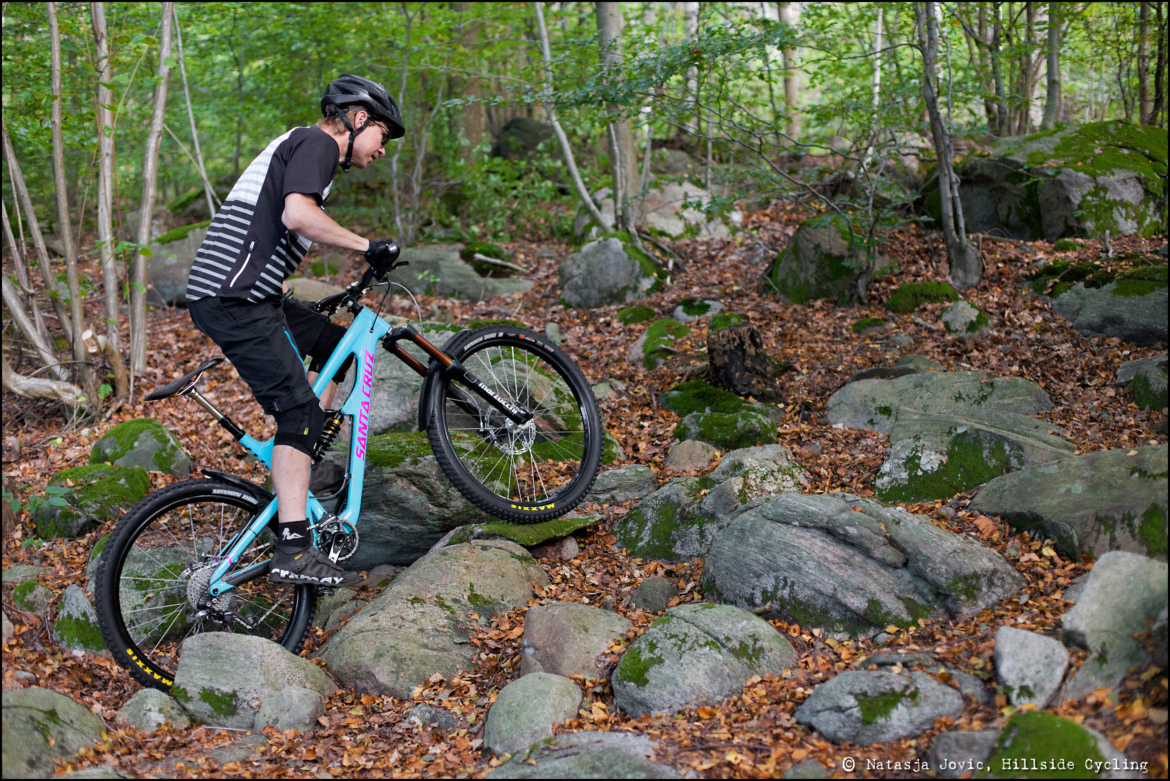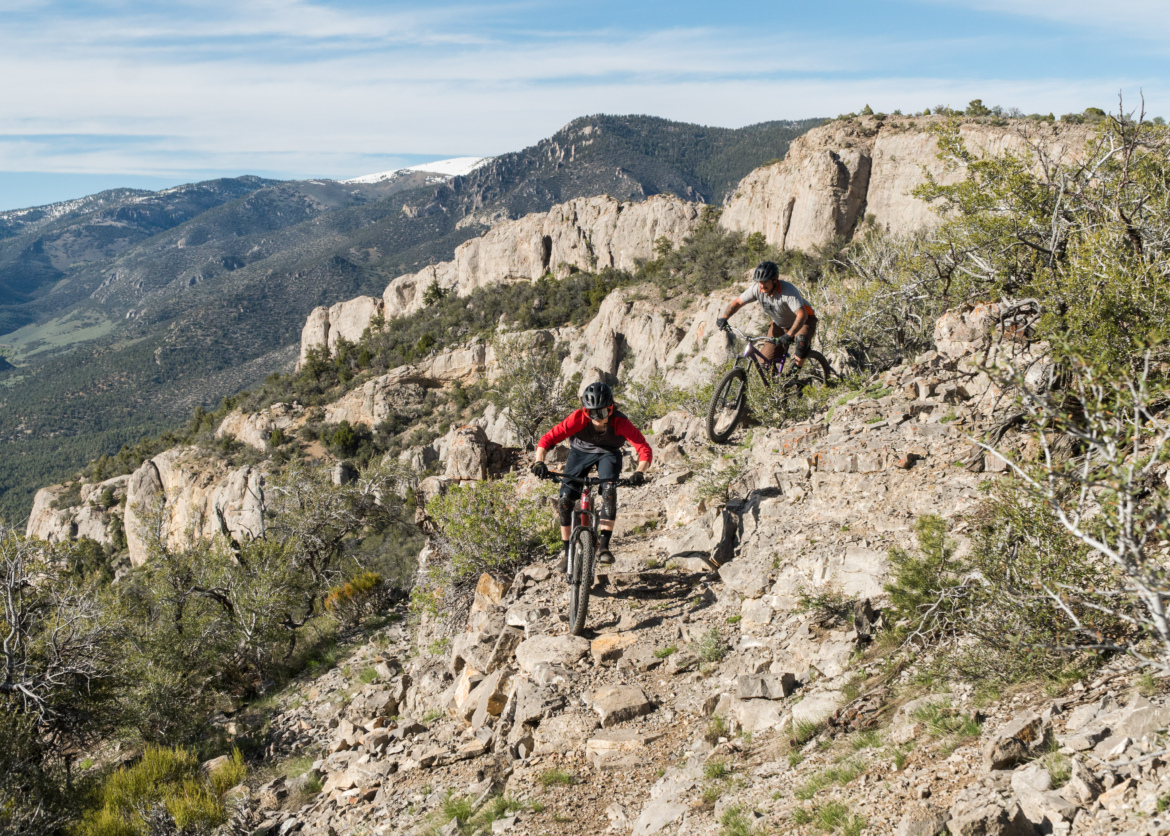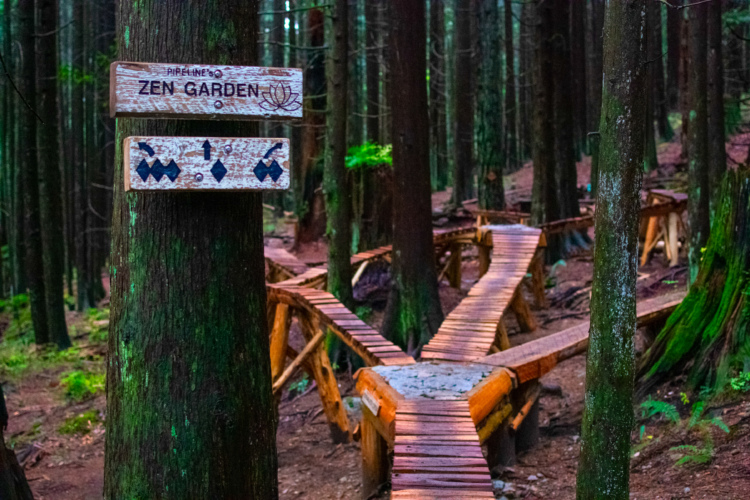
It seems like everywhere I travel, the locals want to boast about how challenging their trails are. Depending on where I am on the continent, I’ve heard the terms “Pisgah miles,” “Sedona miles,” “North Shore miles,” and most recently, “Adirondack miles” bandied around.
What’s with this masochistic pride in the difficulty of one’s local trails? And how exactly do you know that your local trails are more difficult than somebody else’s? Well, if you want to determine how difficult your next mountain bike ride will be and benchmark it against other rides you’ve been on, here’s a totally scientific formula to calculate ride difficulty with 100% certainty:
Ride difficulty = # of miles X (elevation gain/miles) X (trail roughness/miles)
This formula includes three different variables. Let’s look at each of them.

Variable 1: # of miles, i.e. ride distance
All else being equal, a longer mountain bike ride is more difficult than a shorter one. The total number of miles is often the top-line statistic that I look at to determine a ride’s difficulty, but the problem is, “all else” is rarely equal.
The mileage metric is really only useful if you’re comparing one ride in a trail system to another ride in that same trail system or in extremely similar terrain. Once the other variables begin to change, we need to dive deeper into the formula.

Variable 2: (elevation gain/miles), i.e. average feet of climbing per mile
In my opinion, this second variable is one of the most informative statistics that indicate how difficult a given mountain bike ride will be. To calculate the average number of feet of climbing per mile, simply take a ride’s total elevation gain and divide it by the number of miles ridden.
This calculation is informative because it works for loop rides and point-to-point routes alike. While sometimes point-to-point routes can throw a wrench in the system with a short, steep ascent, knowing how many feet of climbing you’re going to endure over a given distance is an easy way to compare different routes.
Based on my personal experience over the years, I’ve created rules of thumb that allow me to prepare myself for the challenge I’m about to face. These ranges are based on my own personal fitness, experience, and terrain. Your elevation may vary, but here’s a good starting point:
- Less than 100 feet/mile: Easy mountain biking
- 125 feet/mile – 175 feet/mile: Normal mountain biking
- 200+ feet/mile: Steep and strenuous mountain biking
- 250+ feet/mile: Hike-a-bike required for some or most of the climb
These ranges aren’t precise due to the final variable, which can especially influence the breaking point between riding and pushing: the roughness of the terrain.
Finally, while it should be obvious, note that this number is an average over the entire ride. So, if you’re pedaling a loop with an average of 200 feet/mile of climbing with roughly the same steepness of climbing and descending, you’ll actually be gaining 400 feet of elevation per mile on the uphill portion of the ride.

Variable 3: (trail roughness/miles), i.e. average roughness of the trail
The roughness of a trail comes from obstacles in the trail tread that slow you down, forcing you to work harder and take longer to cover the respective mileage. Average roughness is determined by how rough the bulk of the miles of riding will be along your given route. For example, if half of your route consists of a smooth gravel road and the other half is a rough singletrack, that reduces the average roughness over the entire length.
This third variable is multiplied by the other variables because trail roughness truly compounds the difficulty of both distance and steepness. In particular, a rough, steep climb can force you off your bike sooner into a slow hike-a-bike. Time spent pushing your bike instead of riding it dramatically increases a ride’s relative difficulty.
Sometimes trail roughness is captured in a trail’s technicality rating (eg. green vs. black), but that’s not always the case. For example, an intermediate trail filled with a constant barrage of small, rough obstacles like root webs and rolling rocks could be slower to ride than an advanced trail with bigger ledge drops and boulders but with a generally faster trail tread.
Since nobody can agree on mountain bike trail difficulty ratings, Variable 3 is the true X factor, which is why this will never be a scientific formula. There will never be an objective way to define the average roughness of a trail, but you can still subjectively compare the roughness of different trails you’ve ridden.

Parting thoughts
When most locals refer to their riding as “[Our Destination] miles,” they’re usually referring to the roughness of the terrain, which makes a certain kind of sense. This is definitely true in places like Sedona, where even the flat trails are filled with square-edged rocks that riders have to constantly hop up and down. However, when I was in the Adirondacks, the reference to “Adirondack miles” seemed to refer to the steepness of the climbs, at least for most of the trails — a few were exceptionally rooty. This is a bit disingenuous because climb steepness can easily be captured by the simple calculation in Variable 2. For a true double whammy, you can ride trails that are rough and steep, which is what Pisgah is renowned for.
A double whammy can quickly become a triple whammy if you make your ride longer, which is exactly where this equation comes in. Mountain bike ride difficulty isn’t dictated by any one factor. Instead, it is the interaction of all three of these variables that make one mountain bike ride more difficult than another.
The interactions between these variables are why a short, steep 6-mile ride on the North Shore of Vancouver might take more out of you than 20 miles of pedaling in Dallas.
I was on a plane recently while traveling back home to Durango, CO, and the guy in front of me made a comment about how much more difficult the riding in Durango is compared to his home trails in Dallas. Yeah, the trails in Durango are always going to be tougher than the trails in Dallas, and this formula explains why.
But I won’t be going around boasting about “Durango miles” anytime soon!





















9 Comments
Nov 18, 2024
A 2000’ gain from 1000 to 3000 is a very different difficulty from 9000 to 11000 like you might have experienced in Durango
Nov 18, 2024
Nov 21, 2024
Nov 18, 2024
Nov 24, 2024
Nov 25, 2024
Nov 21, 2024
"Grit measures the overall difficulty of a mountain bike ride based on factors such as the speed of the ascent and descent and the angle of turns throughout the ride." 0-20 Grit is considered an easy ride, 40+ is hard.
I don't think the measurement is granular enough to take into account technical trail features, though you can plot it over time or distance to see which parts of the ride were steep, or twisty which is a good indication that a trail is rough. It's definitely those accelerations from a stop and full-body power moves that can make a ride more difficult.
Nov 22, 2024
Nov 19, 2024